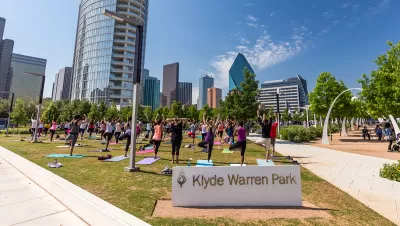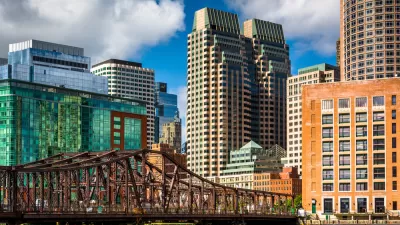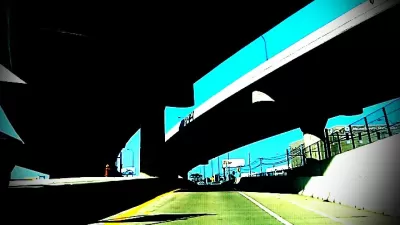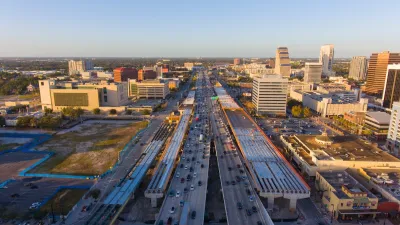Some worry that, of the many reasons cities pursue cap parks, creating quality green space is low on the list.

Increasing numbers of U.S. cities are creating parks on top of urban highways in hopes of spurring development, according to the Pew Charitable Trust. Cities often turn to cap parks as a way to repurpose aging infrastructure and revitalize urban cores, writer Martha Moore explains on the Trust's blog. "In crowded cities, highway deck parks are a way to create new acreage and provide green space that can spur downtown development."
The benefits of cap parks are not undisputed, though. Critics—including Streetsblog USA editor Angie Schmitt—fear that cap parks are little more than a form of greenwashing, providing plausible cover for highway expansions that draw funds from public transit.
Moore delves into the economic and environmental impacts of cap parks in Pittsburgh, Dallas, and Atlanta. Other cities considering or working on cap parks include Philadelphia, Golden, CO, and Santa Monica, CA.
FULL STORY: More Cities Are Banishing Highways Underground — And Building Parks on Top

Study: Maui’s Plan to Convert Vacation Rentals to Long-Term Housing Could Cause Nearly $1 Billion Economic Loss
The plan would reduce visitor accommodation by 25,% resulting in 1,900 jobs lost.

North Texas Transit Leaders Tout Benefits of TOD for Growing Region
At a summit focused on transit-oriented development, policymakers discussed how North Texas’ expanded light rail system can serve as a tool for economic growth.

Why Should We Subsidize Public Transportation?
Many public transit agencies face financial stress due to rising costs, declining fare revenue, and declining subsidies. Transit advocates must provide a strong business case for increasing public transit funding.

How to Make US Trains Faster
Changes to boarding platforms and a switch to electric trains could improve U.S. passenger rail service without the added cost of high-speed rail.

Columbia’s Revitalized ‘Loop’ Is a Hub for Local Entrepreneurs
A focus on small businesses is helping a commercial corridor in Columbia, Missouri thrive.

Invasive Insect Threatens Minnesota’s Ash Forests
The Emerald Ash Borer is a rapidly spreading invasive pest threatening Minnesota’s ash trees, and homeowners are encouraged to plant diverse replacement species, avoid moving ash firewood, and monitor for signs of infestation.
Urban Design for Planners 1: Software Tools
This six-course series explores essential urban design concepts using open source software and equips planners with the tools they need to participate fully in the urban design process.
Planning for Universal Design
Learn the tools for implementing Universal Design in planning regulations.
City of Santa Clarita
Ascent Environmental
Institute for Housing and Urban Development Studies (IHS)
City of Grandview
Harvard GSD Executive Education
Toledo-Lucas County Plan Commissions
Salt Lake City
NYU Wagner Graduate School of Public Service





























